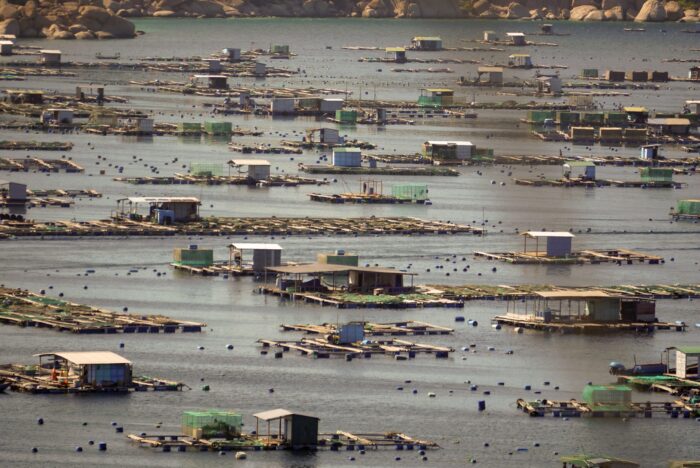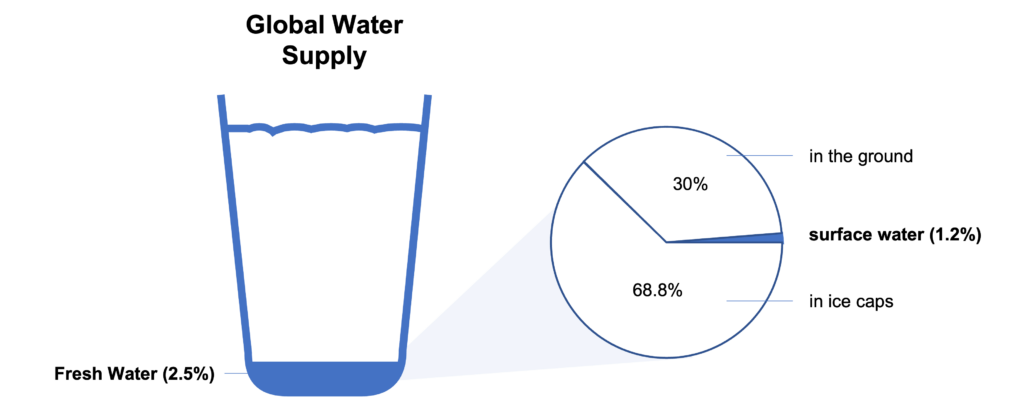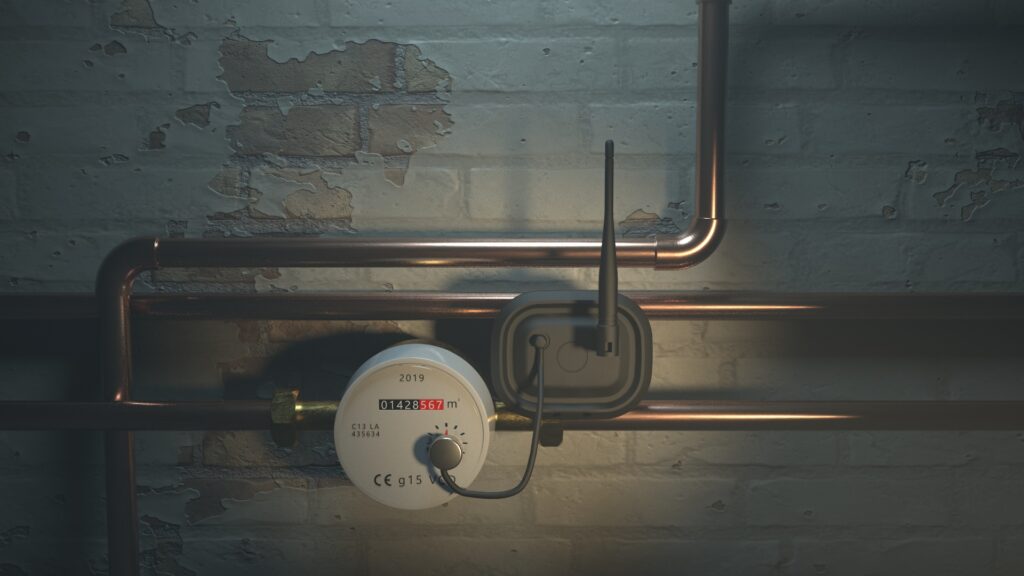
4 min read
KEY POINTS
- The water crisis affects billions of people around the globe. It involves flooding, droughts, scarcity, pollution and turbid water.
- Only 2.5% of the global water supply is useful. Only 1.2% of that is available. Households are responsible for 10% of the total water consumption in Europe.
- The real estate and construction industry plays a big role in mitigating the crisis by reusing water locally, monitoring overconsumption and densifying cities.
Why floods and droughts are the next global crisis
Extreme weather conditions are leading to water excess in some parts of the world, and severe water shortages elsewhere. And it’s only going to get worse. We’ve written this article to highlight the importance of tackling water scarcity, what PropTech can do about it, and AMAVI’s role in targeting this crucial issue.
Are we sleepwalking into a water crisis?
Scientists, environmentalists, and public agencies have long been aware of the issues. But recent news stories have alerted the public to a 21st century water crisis involving flooding, scarcity, pollution, and turbid water from sedimentation and soil erosion:
- The Colorado River and its tributaries have been shrinking, affecting around 40 million people who rely on its water for drinking, agriculture, and electricity.
- 30 million people were affected by the deadly 2022 floods in Pakistan.
- Last year’s floods in Germany, Belgium, France, the Netherlands, and Luxembourg cost 240 lives and €38bn in damage.
- The ‘drying up’ of China’s Yangtze River has drastically reduced hydroelectric generation, leading to factory closures.
Walking on thin ice
Increasing population inevitably means growing demand for water. Yet here on the ‘blue planet’ fresh water is only 2.5% of the total, and most of that is locked up in glaciers and ice caps. A further 30% of that 2.5% is ground water, and only 1.2% is surface water – a tiny fraction of the H2O on the planet. We can all see rivers and reservoirs, but ground water is less visible and tends to get managed poorly.


And even where water is plentiful, not all fresh water makes it to household taps and pipes. The public water ‘supply chain’ in Europe loses from 5% to over 50% of water abstracted.
Who’s most at risk?
Nearly 25% of the global population could face severe water shortages in the near future. In hot regions where the water supply starts off low, rising demand can quickly cause severe shortages. Qatar is heavily dependent on seawater desalination for its drinking water. In Chennai (India), the drying up of lakes recently led to violent protests.
Who are the baddies here?
At first sight, construction and real estate aren’t the worst offenders when it comes to water use. The biggest commercial users in Europe are oil and gas, agriculture, and textiles, with households responsible for 10% of total consumption.
But the water used in the construction process alone is still 3.4% of total European water consumption, and the ‘embodied water’ used for materials is significant (see right).
Refurbishment of older buildings uses less water than new construction, which can also reduce the open space where water can naturally infiltrate the soil and replenish groundwater reserves.
What about households?
Households account for 10% of the total water consumption in Europe. Only about 5% of that is for drinking and cooking, with the rest used for personal hygiene (33%), washing clothes and dishes (33%), and flushing toilets (25-30%).
The way houses are built and fitted out has a cumulative effect on water use throughout the lifecycle of the building. Energy and water savings from more efficient showers and appliances add up over the years.
Water waste has had a low profile compared to reducing carbon emissions, but it is moving quickly up the political and environmental agenda, and the public is increasingly aware of the benefits of grey water recycling systems and rainwater collection.
EMBODIED WATER IN CONSTRUCTION MATERIALS
Aluminium: 88,000 litres per ton
Cement: 3,500 to 5,000 litres per ton
Steel: 39,000 litres per ton
Copper: 590,000 litres per ton
Plastic: 187,000 litres per ton
Source: The Royal Australian Institute of Architects.
Teaming up with the best
AMAVI is already investing in best-in-class solutions to tackle the crisis.
Shayp is a tech-enabled SaaS company that’s transforming how the building sector addresses leakages and unnecessary water usage, with *real-time water flow analytics and non-invasive sensors.
Leakages can have a serious effect on an organisation’s water bill since the vast majority go unnoticed or unreported. Using machine learning techniques and unobtrusive sensors, it identifies leakages and system anomalies in real-time, and the webapp alerts staff and helps prioritise interventions, based on the gravity of the leak and the appliance causing the leak.
Shayp has helped public and private organisations save hundreds of thousands of euros, including municipalities, hospitals, offices, retailers, schools, and multi-residential real estate owners. Thanks to Shayp, the City of Brussels is now saving over 50 million litres of water per annum.

Hydraloop has designed and developed a decentralised ‘grey water’ recycling system for homes and commercial premises. These award- winning devices help save both water and energy and can be used in cities, rural areas, and off-grid, where water supply may be unreliable.
The easy-to-use appliance treats shower and bath water so it can be re-used in toilets, washing machines, and for garden irrigation. It can save up to 45% of scarce drinking water, without compromising on convenience or comfort.
Hydraloop’s patented technology won multiple accolades at the CES 2020 trade fair in Las Vegas and is sold globally through a network of 140 sales, distribution, and service partners.
What’s next?
AMAVI believes the construction and real estate sector can punch above its weight in mitigating the effects of the water crisis, with PropTech providing answers and benefits throughout the lifetime of built assets. We’ll continue to build our specialist expertise in water management, and to seek out the most promising scale-ups in this exciting field.
